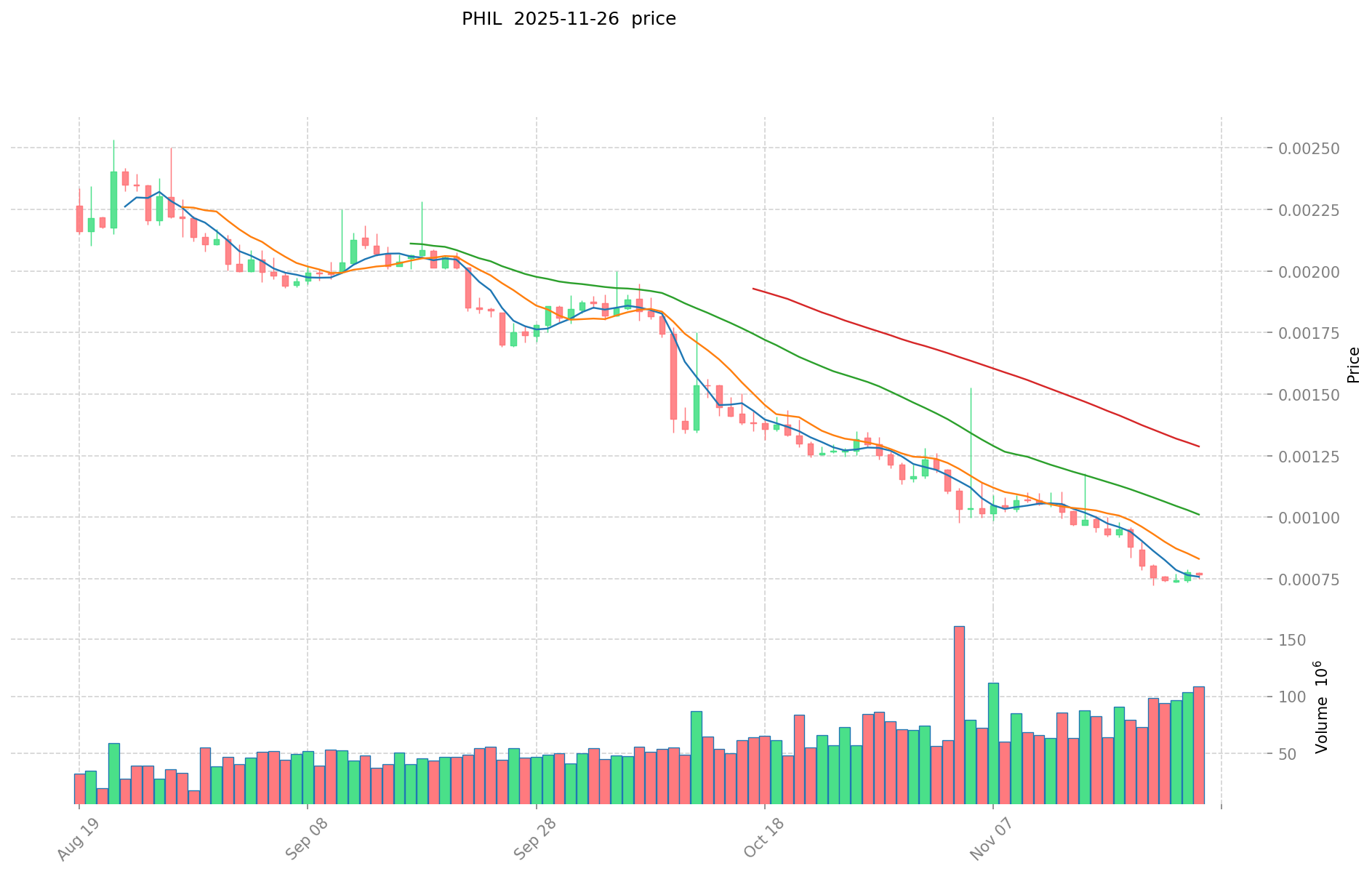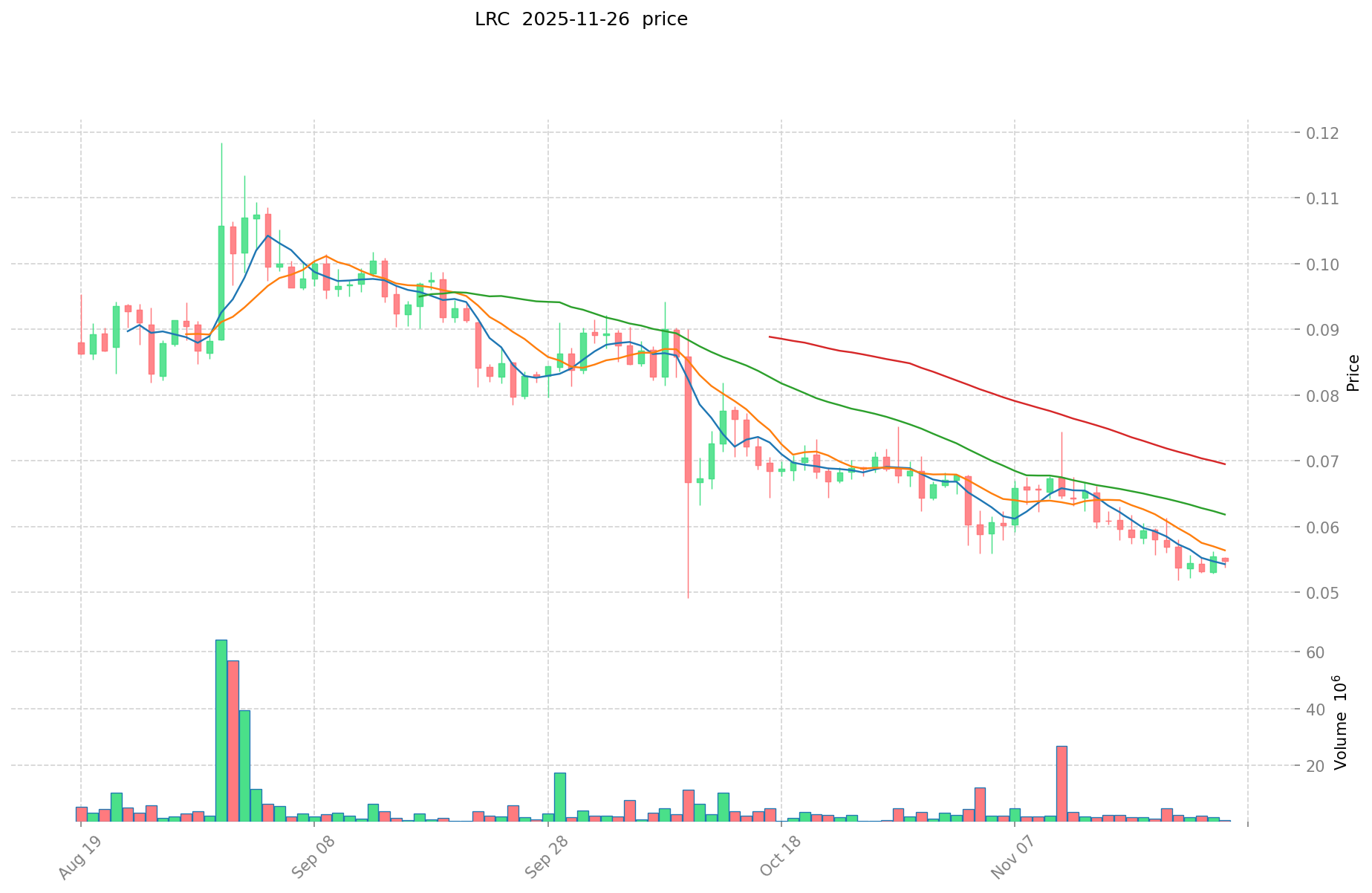PHIL vs LRC: The Battle for Cryptocurrency Supremacy in Decentralized Finance
Introduction: PHIL vs LRC Investment Comparison
In the cryptocurrency market, the comparison between PHIL vs LRC has been an unavoidable topic for investors. The two not only show significant differences in market cap ranking, application scenarios, and price performance, but also represent different positioning in the crypto asset space.
Phil Token (PHIL): Launched in 2024, it has gained market recognition for its focus on integrity and collaboration in the memecoin space.
Loopring (LRC): Since its inception in 2017, it has been hailed as a decentralized exchange protocol, and is one of the notable projects in the Ethereum ecosystem.
This article will comprehensively analyze the investment value comparison between PHIL and LRC, focusing on historical price trends, supply mechanisms, institutional adoption, technological ecosystems, and future predictions, attempting to answer the question investors are most concerned about:
"Which is the better buy right now?"
I. Price History Comparison and Current Market Status
PHIL and LRC Historical Price Trends
- 2024: PHIL reached its all-time high of $0.0735 on August 30, 2024.
- 2021: LRC hit its all-time high of $3.75 on November 10, 2021.
- Comparative analysis: In the recent market cycle, PHIL has dropped from its high of $0.0735 to a low of $0.0007223, while LRC has fallen from $3.75 to its current price of $0.05443.
Current Market Situation (2025-11-26)
- PHIL current price: $0.000765
- LRC current price: $0.05443
- 24-hour trading volume: PHIL $96,617.54 vs LRC $32,384.05
- Market Sentiment Index (Fear & Greed Index): 20 (Extreme Fear)
Click to view real-time prices:
- Check PHIL current price Market Price
- Check LRC current price Market Price


II. Core Factors Affecting Investment Value of PHIL vs LRC
Supply Mechanism Comparison (Tokenomics)
- PHIL: Decentralized token structure with deflationary mechanics; maximum supply capped at 100 billion tokens
- LRC: Fixed maximum supply of 1.375 billion tokens with deflationary mechanism through token burning
Institutional Adoption and Market Applications
- Institutional Holdings: LRC has attracted more institutional interest, particularly in layer 2 scaling solutions
- Enterprise Adoption: LRC has broader enterprise applications through zkRollup technology for Ethereum scalability; PHIL focuses more on content creation ecosystem
- Regulatory Attitudes: Both face regulatory uncertainties; LRC generally benefits from closer alignment with Ethereum's regulatory status
Technology Development and Ecosystem Building
- PHIL Technology Upgrades: Web3 content monetization platform focusing on creator economies
- LRC Technology Development: Layer 2 scaling solution for Ethereum using zkRollups; provides significant transaction cost reduction and faster processing
- Ecosystem Comparison: LRC has stronger DeFi integration and payment solutions through Loopring Exchange and zkRollup technology; PHIL is building more in content creation and social network spaces
Macroeconomic and Market Cycles
- Performance in Inflationary Environments: LRC shows stronger potential with its defined supply cap and deflationary mechanism
- Macroeconomic Monetary Policy: Both tokens show sensitivity to broader crypto market conditions which are influenced by interest rates and dollar strength
- Geopolitical Factors: LRC's scaling solutions may have advantages in high-demand cross-border transaction environments
III. 2025-2030 Price Prediction: PHIL vs LRC
Short-term Prediction (2025)
- PHIL: Conservative $0.00039676 - $0.000763 | Optimistic $0.000763 - $0.00110635
- LRC: Conservative $0.046325 - $0.0545 | Optimistic $0.0545 - $0.057225
Mid-term Prediction (2027)
- PHIL may enter a growth phase, with estimated price range $0.00062249355 - $0.0015458589825
- LRC may enter a steady growth phase, with estimated price range $0.04712001875 - $0.088181749375
- Key drivers: Institutional fund inflows, ETF developments, ecosystem growth
Long-term Prediction (2030)
- PHIL: Base scenario $0.001851873180467 - $0.00253706625724 | Optimistic scenario $0.00253706625724+
- LRC: Base scenario $0.09012551746275 - $0.127978234797105 | Optimistic scenario $0.127978234797105+
Disclaimer: The above predictions are based on historical data and market analysis. Cryptocurrency markets are highly volatile and subject to change. This information should not be considered as financial advice.
PHIL:
| 年份 | 预测最高价 | 预测平均价格 | 预测最低价 | 涨跌幅 |
|---|---|---|---|---|
| 2025 | 0.00110635 | 0.000763 | 0.00039676 | 0 |
| 2026 | 0.0011403035 | 0.000934675 | 0.0008412075 | 22 |
| 2027 | 0.0015458589825 | 0.00103748925 | 0.00062249355 | 35 |
| 2028 | 0.001847093986237 | 0.00129167411625 | 0.00108500625765 | 68 |
| 2029 | 0.002134362309691 | 0.001569384051243 | 0.000894548909208 | 105 |
| 2030 | 0.00253706625724 | 0.001851873180467 | 0.001555573471592 | 142 |
LRC:
| 年份 | 预测最高价 | 预测平均价格 | 预测最低价 | 涨跌幅 |
|---|---|---|---|---|
| 2025 | 0.057225 | 0.0545 | 0.046325 | 0 |
| 2026 | 0.078766125 | 0.0558625 | 0.045248625 | 2 |
| 2027 | 0.088181749375 | 0.0673143125 | 0.04712001875 | 23 |
| 2028 | 0.083190393103125 | 0.0777480309375 | 0.068418267225 | 42 |
| 2029 | 0.099781822905187 | 0.080469212020312 | 0.051500295693 | 47 |
| 2030 | 0.127978234797105 | 0.09012551746275 | 0.078409200192592 | 65 |
IV. Investment Strategy Comparison: PHIL vs LRC
Long-term vs Short-term Investment Strategies
- PHIL: Suitable for investors focused on content creation ecosystems and meme coin potential
- LRC: Suitable for investors interested in Ethereum scaling solutions and DeFi integration
Risk Management and Asset Allocation
- Conservative investors: PHIL: 20% vs LRC: 80%
- Aggressive investors: PHIL: 40% vs LRC: 60%
- Hedging tools: Stablecoin allocation, options, cross-currency portfolios
V. Potential Risk Comparison
Market Risk
- PHIL: Higher volatility due to meme coin nature
- LRC: Dependence on Ethereum ecosystem performance
Technical Risk
- PHIL: Scalability, network stability
- LRC: Reliance on zkRollup technology, potential vulnerabilities in smart contracts
Regulatory Risk
- Global regulatory policies may impact both differently, with LRC potentially benefiting from closer alignment with Ethereum's regulatory status
VI. Conclusion: Which Is the Better Buy?
📌 Investment Value Summary:
- PHIL advantages: Focus on content creation ecosystem, potential for rapid growth in meme coin space
- LRC advantages: Established Layer 2 scaling solution, broader DeFi integration, institutional interest
✅ Investment Advice:
- Novice investors: Consider a small allocation to PHIL for exposure to meme coin market, larger allocation to LRC for more established technology
- Experienced investors: Balanced approach with both tokens, adjusting based on risk tolerance and market conditions
- Institutional investors: Focus on LRC for its scaling technology and potential institutional adoption
⚠️ Risk Warning: Cryptocurrency markets are highly volatile. This article does not constitute investment advice. None
VII. FAQ
Q1: What are the key differences between PHIL and LRC? A: PHIL is a newer token focused on content creation and meme coin potential, while LRC is an established Layer 2 scaling solution for Ethereum with broader DeFi integration.
Q2: Which token has shown better price performance recently? A: As of November 26, 2025, PHIL has shown more volatility with a current price of $0.000765, while LRC has been more stable at $0.05443.
Q3: How do the supply mechanisms of PHIL and LRC compare? A: PHIL has a maximum supply of 100 billion tokens with deflationary mechanics, while LRC has a fixed maximum supply of 1.375 billion tokens with a deflationary mechanism through token burning.
Q4: What are the main technological focuses of each token? A: PHIL is developing a Web3 content monetization platform, while LRC is focused on Layer 2 scaling solutions for Ethereum using zkRollup technology.
Q5: How do institutional adoptions differ between PHIL and LRC? A: LRC has attracted more institutional interest, particularly in layer 2 scaling solutions, while PHIL has less institutional adoption but focuses more on the content creation ecosystem.
Q6: What are the long-term price predictions for PHIL and LRC by 2030? A: For PHIL, the base scenario predicts $0.001851873180467 - $0.00253706625724, while for LRC, it's $0.09012551746275 - $0.127978234797105.
Q7: How should investors allocate their assets between PHIL and LRC? A: Conservative investors might consider 20% PHIL and 80% LRC, while aggressive investors might opt for 40% PHIL and 60% LRC, adjusting based on individual risk tolerance and market conditions.
Share
Content